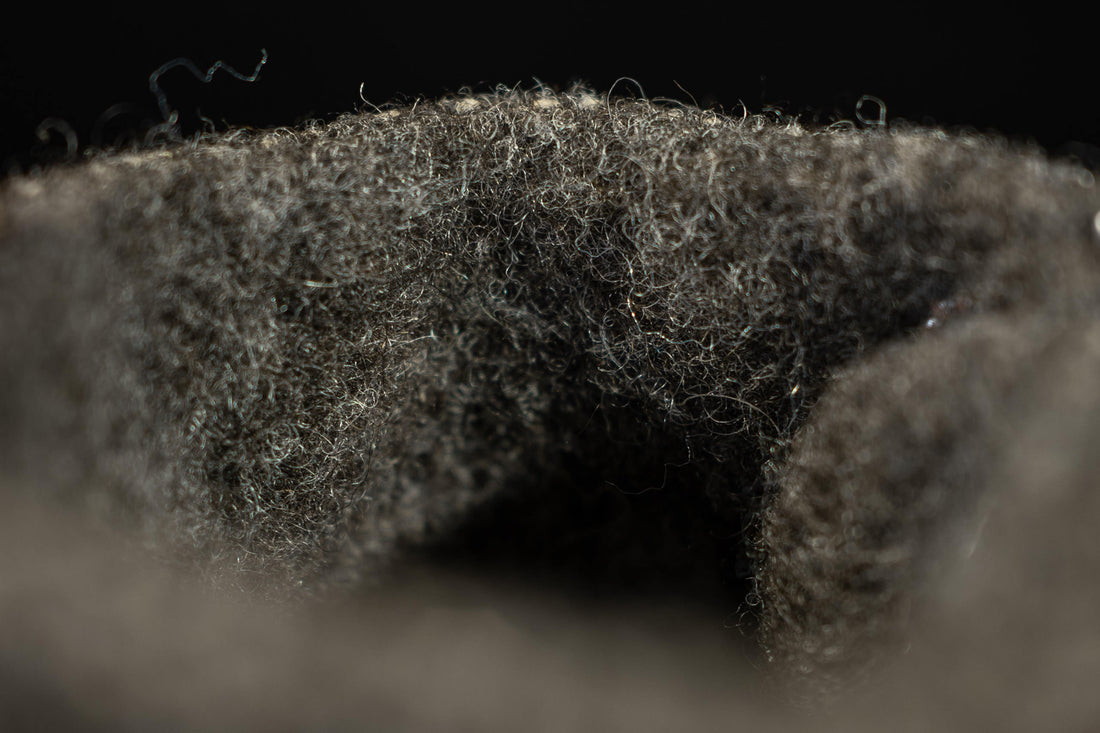For a few years now, we've been producing very special winter Wildling shoes with sometimes both outer material and lining made of wool. The wool's temperature-regulating characteristics ensure a very comfortable environment for our feet.
A lot of the wool we use is purchased from Nordwolle, a company located on the island of Rügen and specializes in the production of high-quality functional textiles made from the wool of endangered sheep breeds. Nordwolle’s work focuses particularly on sustainability, regionalism and making a valuable contribution to wildlife conservation. That’s why the wool itself and the entire processing of this classic resource are “made in Germany”. The guest article below by Marco Scheel, General Manager of Nordwolle Rügen, discusses the question of optimal care for these models. Following his contribution you will find two additional suggestions for wool care.
CARING FOR YOUR SHOES – HOW TO DO IT RIGHT!
by Marco Scheel, General Manager of Nordwolle Rügen
What is milled wool and where does it come from?
Milled wool comes from sheep, of course, but this fluffy breed comes with a long-lasting tradition.
Our concept is to work with the benefits of a high-tech fiber, that was perfected over millions of years of evolution, and successfully combining this, with the preservation of a very unique species.
The specific breed that provides a lot of the wool used for Wildling shoes is called "Grauwollige Pommersche Landschaf" – or Pomeranian Greywool Sheep. It was bred on the Baltic Sea island of Rügen about 3800 (!) years ago and is one of the few breeds cultivated, especially and only for their wool.
The fishermen on Rügen Island, making their living under cold and wet conditions had to find something to keep them dry and warm for long periods of time, that would also be very durable and easy to clean.
How come wool can do it all?
Those fishermen intuitively farmed a breed with special wool qualities. First of all, there is the fibre structure. In the Pomeranian sheep, fibre thickness ranges from 20μm to 50μm. (For comparison: merino wool has a constant 20μm.) From about 35μm the individual fibers are hollow, more like a tube. This trapped air ensures that the wool is ultra light and with a cosy warmth. In addition to that, the thick fibres loosen the weave and prevent capillary action developing between the fibres. When it rains, small droplets form on the fibres and roll off on the outside like on a slate roof.
The rest is thanks to lanolin – a naturally occurring fat, that can also be found in most cosmetic products.
Since water and fat are known not to mix, it increases the water-repellent character of the fleece enormously! All these features ensure that the sheep can live well even in our rough climate on Rügen.
What to do or not to do with your shoes?
Finally, you say…the long introduction will help us understand why this wool needs a specific care.
First, the most important thing: please do not use conventional waterproofing sprays on any wool shoes! Those sprays are made for polyester and polyacrylic and often contain solvents to increase penetrability and water displacement. Apart from being toxic to us and the environment, they also loosen the lanolin inside the wool, so the result would probably be contrary to the desired one. Nordwolle washes the wool very gently to obtain a high level of natural lanolin in the fibres. Since this lanolin is naturally “grown”, it wears off more slowly while using the shoe than subsequently applied lanolin. A good thing that could be applied to your Wildling shoes made from wool is a perfume-free moisturiser.
Since communication in a flock of sheep is strongly influenced by pheromones (hormonal fragrances) wool is naturally made to clean itself of all kinds of different odours so that communication is not disturbed. Nevertheless, should your wool shoes step into any kind of sticky dirt, it is best to simply tap them when dried off, or gently brush the affected part. You should avoid washing the whole shoe.
Our sheep live in an exposed location near the coast and have to defy a harsh climate. As Rügen is located very far to the east and from time to time gets some of the continental Russian climate, it is quite humid and quickly becomes pretty cold. They deliver their lambs in the snow and nurse them standing in the full sun on our dykes. That is only possible because their wool regulates temperature perfectly.
Bye bye Käsemauken (smelly feet)!

Image: Wildling Shoes/Sarah Pabst | Marco from Wildling Shoes partner 'Nordwolle' holding untreated wool in his hands
Recommended Care Instructions for Wildling Shoes wool models
As described by Marko, the wool naturally has water-repellent characteristics – so additional waterproofing is not necessary. However, the microfiber part of the wool shoes should be waterproofed before the first use and then at regular intervals. Please make sure that the waterproofing spray does not come into contact with the wool. If the lanolin content decreases after prolonged use, which becomes noticeable by the fact that the milled wool leaks water and the shoe feels moist from the inside, the shoes can be lubricated. There are several ways to re-grease the wool. Here are two suggestions:
- Grease the shoe with a mixture of lanolin and beeswax
Apply a wax mixture such as the Lenya waterproofing mix containing lanolin, beeswax, soy and jojoba oil to the milled wool using a soft brush or cloth (do not rub too much!) and gently dry it using a hair dryer on a light heat setting. The wax can also be used as waterproofing for microfiber parts.
- Apply a lanolin spray treatment
A lanolin spray treatment is an easy way to refresh the water-repellent characteristics of the wool.
Dissolve half a teaspoon of pure lanolin (available at retail outlets or as Adeps Lanae at the pharmacy) in hot water and add a small splash of wool detergent that acts as an emulsifying agent. Put it in a small spray bottle, shake well and fill with lukewarm water. Spray on the milled wool and let the shoes dry naturally – preferably upside-down on a laundry rack, not on the heater.
Have a one of a kind winter, together with a one of a kind winter Wildling shoe.
Header Image: Wildling Shoes | A close-up of the felted wool lining in Wildling minimal shoes


